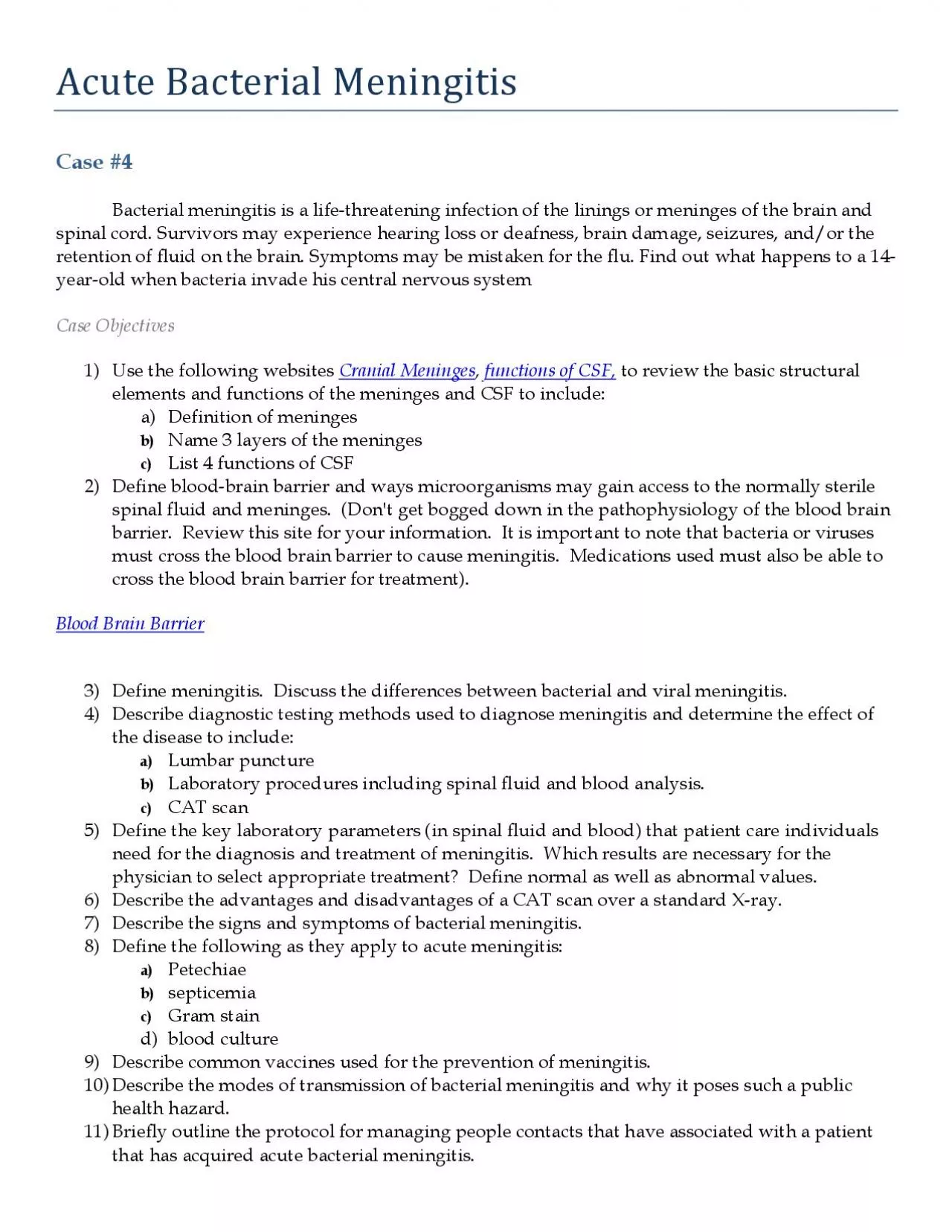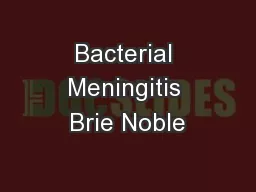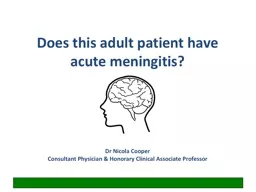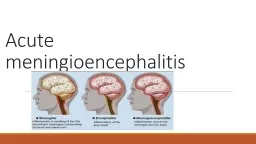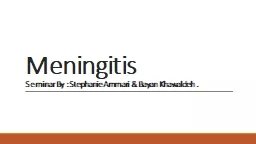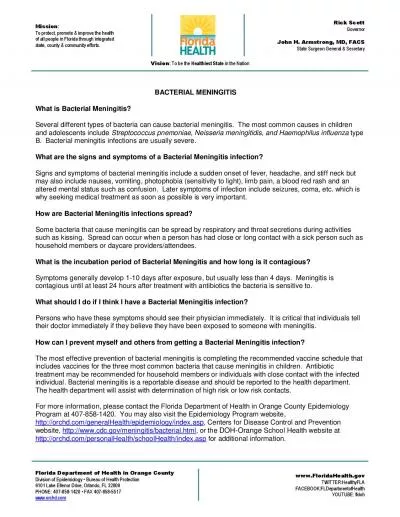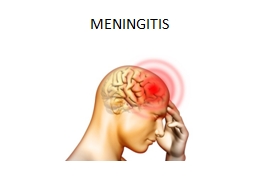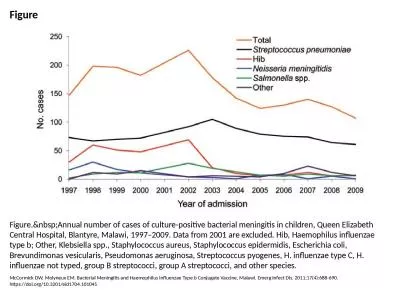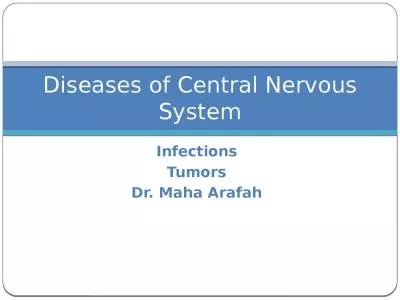PDF-Acute Bacterial Meningitis
Author : cora | Published Date : 2022-08-31
Case 4Bacterial meningitis is a lifethreatening infection of the linings or meninges of the brain and spinal cord Survivors may experience hearing loss or deafness
Presentation Embed Code
Download Presentation
Download Presentation The PPT/PDF document "Acute Bacterial Meningitis" is the property of its rightful owner. Permission is granted to download and print the materials on this website for personal, non-commercial use only, and to display it on your personal computer provided you do not modify the materials and that you retain all copyright notices contained in the materials. By downloading content from our website, you accept the terms of this agreement.
Acute Bacterial Meningitis: Transcript
Download Rules Of Document
"Acute Bacterial Meningitis"The content belongs to its owner. You may download and print it for personal use, without modification, and keep all copyright notices. By downloading, you agree to these terms.
Related Documents

